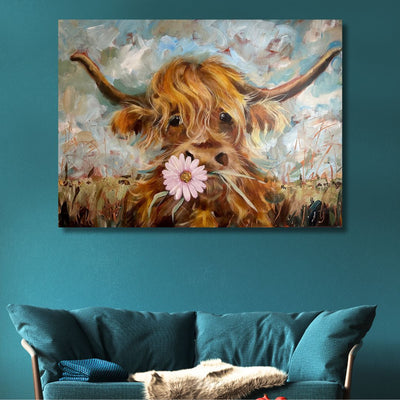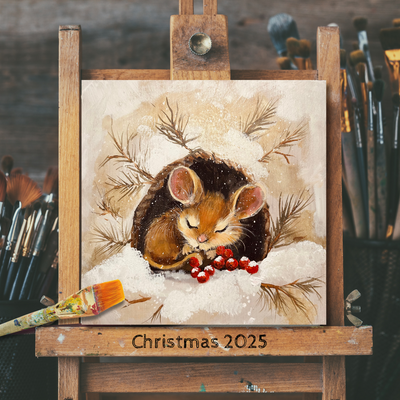The making of "HOPA finds a way"
My original project idea was to create a Grief Companion, a deck of cards that could help individuals understand and navigate the emotional, physical, and behavioural reactions to grief by sharing bite-sized moments of hope.
To view the full collection of postcards click here.
As a starting point, the project drew inspiration from Raymond Briggs's autobiographical "Time for Lights Out" and watching his documentary "Snowmen, Bogeymen & Milkmen". Briggs' work often addresses serious or complex subjects in a way that is engaging for children and adults. Briggs' work usually contains a blend of humour, nostalgia, and melancholy, allowing him to explore serious themes in a poignant and relatable way. This makes his work accessible to readers struggling with reading or simply prefer visual storytelling.
Hope is a central concept in positive psychology and sociology, closely tied to social change and activism. By understanding and studying hope, illustrators can help promote resilience, motivation, and positive change in everyday life. As Highmore (2002) notes, "For Freud as for Marx, the everyday is both real and unreal, both actuality and the disguise of actuality" (p. 20), which suggests that the everyday is a complex both actual and symbolic, and that understanding its various dimensions requires a careful and nuanced analysis of the social, cultural, and psychological forces that shape it. This idea of the everyday as a multi-dimensional phenomenon is reflected in my approach to connecting with my intended audience, which involved creating a companion named "Hopa" - a character made from simple cloth held together with fragile sutures. This bite-sized narrative can gift a sense of optimism, courage, and comfort.
As I explored new making processes such as 3D printing, digital sculpting, and ceramics to create my character, I realised that a figure with empathy required a handmade, imperfect quality. Simple textiles that had been washed, worn, repaired, and rescued were the perfect medium to bring my character to life. A character representing hope could appeal to a wide range of audiences, as hope is a universal concept valued across cultures and age groups. The audience that would connect with a character that represents hope would depend on how well the character is developed and how effectively the character's story and values are communicated.
Exploring literature about hope provided valuable insights into the psychological, social, and emotional factors contributing to expectancy and how hope can be nurtured and sustained in different contexts. It also gave me confidence in my subject matter as I blended scientific and humanitarian perspectives in my research. After reading "Hope in the Age of Anxiety", I can better articulate that even though we cannot literally touch hope, we can feel it because it has the power to set us in motion. Scioli & Biller (2009)."His contemporary, Soren, Kierkegaard put it more plainly when he wrote that life must be live forward but can only be understood backwards" (p. 33).
Making a puppet character that I could use as a still-life model become an even more compelling choice for me after reading "The Soul of the Marionette", Gray uses the metaphor of the marionette to argue that humans are not the autonomous beings we like to believe we are but rather are controlled by a combination of instinct, habit, and external forces. He argues that art and creativity allow us to explore and express these more profound aspects of ourselves and that the marionette can symbolise this creative process. He draws on a wide range of philosophical, literary, and historical sources to support his argument, including the writings of Friedrich Nietzsche, Arthur Schopenhauer, and Samuel Beckett. Gray explains, "The puppet is thought of as soulless, yet it has a soul of a kind; it's a product of the human mind, and the mind that produces it is the same mind that is moved by it. In this sense, the puppet is an image of human freedom and its limitations. It does only what its human creator can make it do, and it does so with the utmost precision, but in this exact precision, it reveals the limits of human power." (p. 21). This suggests that puppets have a certain magic quality that captivates an audience. However, the puppet is ultimately just an inanimate object controlled by external forces, such as strings or a puppeteer. The quote suggests that this tension between the puppet's appearance of life and its lack of agency reflects the human condition, as we are often pulled and manipulated by forces beyond our control.
Hope is an abstract concept that is difficult to illustrate directly. Instead, I used metaphors to evoke a feeling of hope in the viewer and set a stage for the character, surrounded with symbols that provoke thought and reflection. Iteration became a crucial part of my creative process, allowing me to explore multiple possibilities and find the best solution through trial and error.
I used the sea's vastness, resilience, renewing properties, dynamic nature, and association with the unknown all contribute to its metaphorical connection to hope. It serves as a powerful symbol that resonates with our aspirations and the human desire for a brighter future.
I used photography as a reference to draw different scenes and angles, taking inspiration from Wolf Erlbruch's illustrations in "Duck, death and Tulip". Erlbruch's style incorporates whimsical, surreal, and dark elements with bold, black outlines, bright colours, intricate details, and mixed media techniques. His artwork explores philosophical and existential themes, appealing to both children and adults with humour.
I wrote a poem to further refine my design brief, providing a meaningful context for my developing story. This clarified the direction and tone of the project, resulting in a more cohesive and compelling narrative. To bring my vision to life, I created a series of postcards that I hope will inspire people to pass on hope to others.




Leave a comment